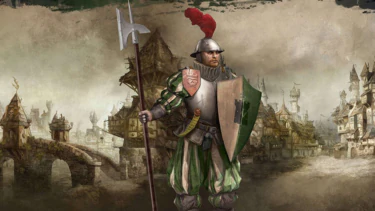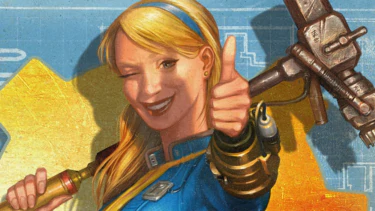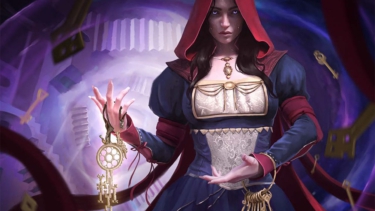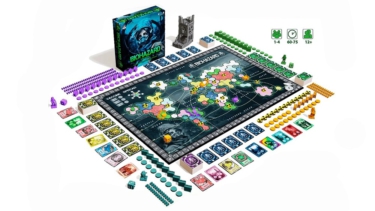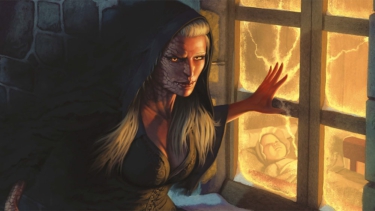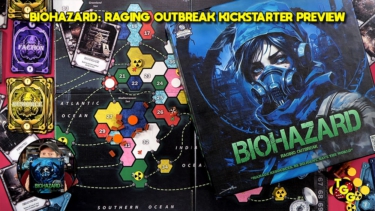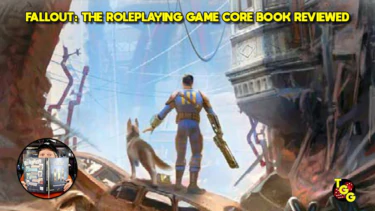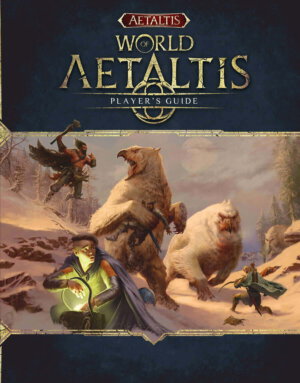
Publisher: Mechanical Muse
Author: Marc Tassin
Artists: Russell Marks, Mitchell Malloy, and Mike Schley
Year: 2021
Pages: 190 pages
Genre: Alternate science fantasy D&D setting
MSRP: $44.99 in hardcover – $19.99 in PDF – or $64.98 for both at DriveThruRPG
The World of Aetaltis is a new campaign setting for Dungeons and Dragons 5th Edition that modifies the core rules extensively in a few areas to capture the feel of the setting. This review covers the Player’s Guide, one of three rulebooks describing the setting. The other two books, the Gamemaster’s Guide and Adventurer’s Guide, will be covered in separate reviews.
In many ways, the setting of Aetaltis is a throwback to the 1990s. In fact, it feels like somebody was running a heavily houseruled 2nd Edition Advanced Dungeons and Dragons campaign with ‘90s TV science fiction influences back in the day and decided to convert it to 5th Edition. This isn’t a complaint. It’s nice to see a setting based on something besides the old standby sword-and-sorcery influences. However, some of the nods to old-school rules may rankle younger gamers.
The basic concept of the setting is that humans (or Atlans, as they are also called) came to the world of Aetaltis 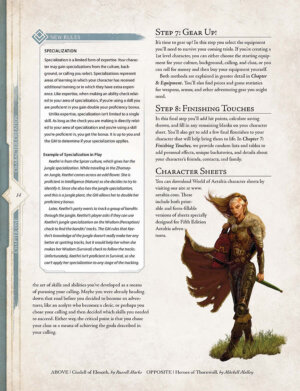
The other sentients on Aetaltis include standard D&D fare (like elves, dwarves, and halflings) as well as some custom creations (like Drothmal, creatures of the frozen north and Scythaa, lizardlike creatures who live in the wastelands to the east and south) and entries from the 2nd Edition Complete Book of Humanoids (faeries and sprites). In describing these creatures and their lifestyles, the rules make several innovations. One of these is to separate the traditional D&D concept of race into two aspects, lineage and culture.
Lineage is supposed to cover the physical aspects of race and includes ability score bonuses and penalties and special abilities like the ability to see in the dark. Culture covers the aspects of a D&D race that are taught or given rather than inherited, and include things like languages known, whether adventurers from this culture are typically literate, and a type of die added to your rolls for starting wealth. Culture descriptions also include purely flavorful things like vices and virtues, other cultures that are liked or disliked, and “public opinion” of members of the culture.
In another nod to 2e, the lineages confer not only ability score bonuses, but also ability score penalties and minimum and maximum ability scores (after lineage modifiers). The most restrictive maximums tend to be reserved for lineages that are the least like humans (for example, tiny sprites have a Strength maximum of 14), but these restrictions may rub some players the wrong way in the current RPG environment.
Some of the traditional 5e classes follow different rules and serve different roles in Aetaltis. For example, rangers are divinely powered protectors of the wild regions, a nod to the days when rangers were required to be of good alignment. Instead of offering a selection of domains, each god offers their own personal domain tailored to reflect the specific god’s powers and concerns. Wizards of Aetaltis use completely different and crunchier spellcasting rules than standard 5e spellcasters. The system basically turns spellcasting from an issue of resource management to one of risk management, as wizards can cast spells of any level if they are willing to risk a 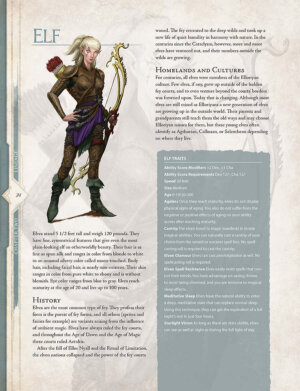
Some 5e classes do not exist in Aetaltis. The bard is replaced with the Mountebank, a non-magical swashbuckling con-artist class. Sorcerers and warlocks don’t exist in Aetaltis. This makes sense because wizard spellcasting is flexible enough that the setting doesn’t need more flexible arcane spellcasting classes.
The strength of Aetaltis is the fact that every addition, subtraction, or change to the rules is grounded in specific ideas about how the setting differs from core 5e D&D assumptions. The descriptions of every lineage, culture, and class are filled with lore that establishes the place of that game element in the world and gives a player roleplaying hooks. Aetaltis feels more like a living, breathing world than most D&D setting books.
Even GMs who don’t want to run the setting may find things to steal in this book. For example, you might like the idea of Mountebanks existing alongside bards in your standard 5e campaign. Or you might choose to adapt the wizard spellcasting system to either arcane or divine magic in your campaign. You might also look at the rules for weak ability score rolls and how to deal with them. Or you might modify some of the lineages to become races in a standard 5e campaign. Features like these may make the Player’s Guide PDF a worthwhile pickup for GMs running more standard campaigns.





